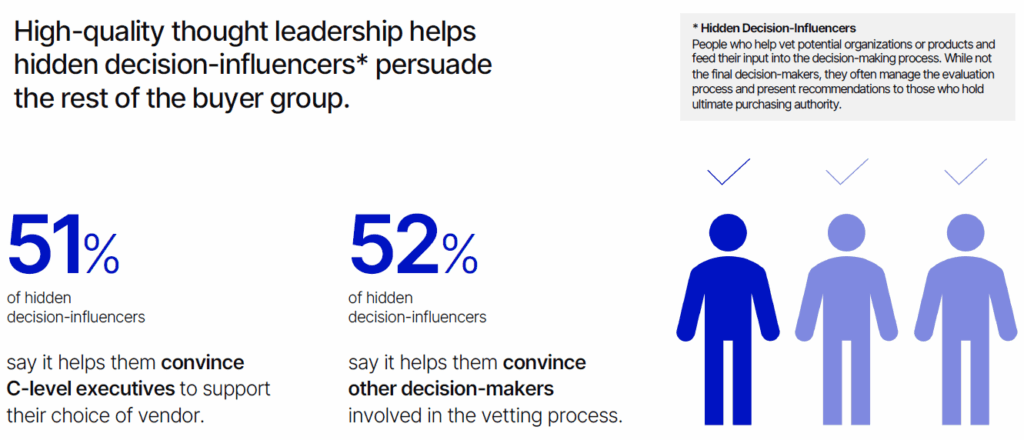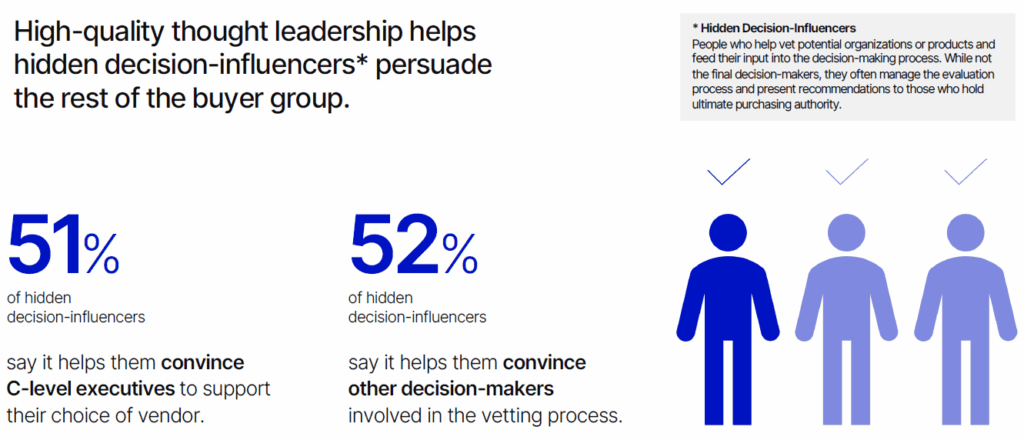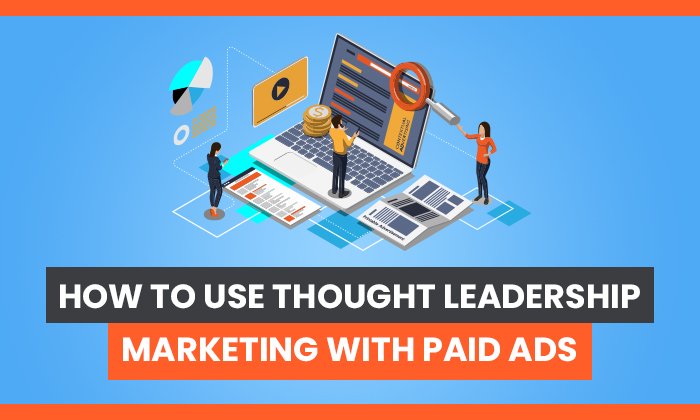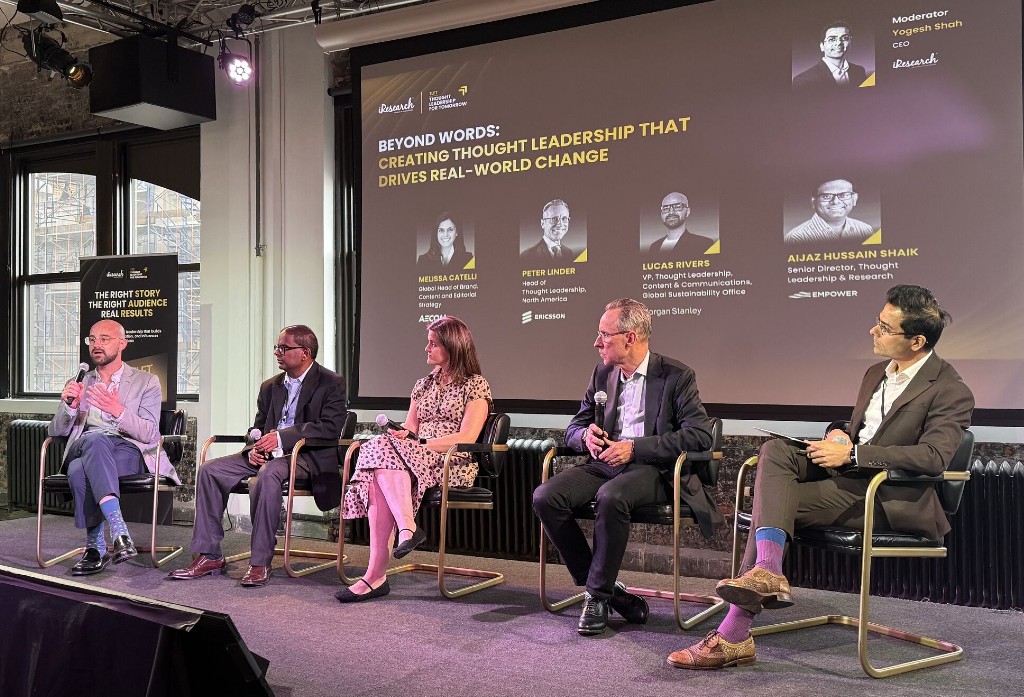B2B Thought Leadership in the Age of AI: Human POVs that Cut Through the Noise

By Nick Nelson
B2B marketing content is quickly diverging into two separate paths: thought leadership, and thought followership.
The latter is more abundant than ever in the age of AI. Thought followership refers to content covering, exploring and synthesizing that which has been said or done before. It might be a repackaging of someone else’s idea, or an amalgamation of established best practices.
Thought leadership, meanwhile, is being made more indispensable than ever before — precisely because it’s one thing AI can’t replicate. Research continues to show that B2B thought leadership is one of the single most influential factors in shaping buying decisions and vendor preferences amid complex, trust-driven, group-based purchase dynamics.
Here’s a look at the latest data on thought leadership in B2B, the growing role of a distinctly human POV, and how to put your brand’s authentic perspectives and expertise at the forefront.
Why thought leadership is becoming a core differentiator for B2B brands
New research from LinkedIn for their B2B Marketing Benchmark, as highlighted in a recent guest post on the LinkedIn Marketing blog from our CEO Lee Odden, suggests that “trust is central to B2B marketing impact, with 94% of marketers agreeing that building trust is the most important factor for achieving B2B brand success.”
Building trust across functionally diverse buying committees can be very challenging in practice, especially because B2B marketers don’t always know exactly who they need to build it with. Many stakeholders with significant influence on B2B purchases — such as process experts from finance, operations and procurement — are largely hidden from marketing activities.
The 2025 B2B Thought Leadership Impact Report from Edelman and LinkedIn reveals that thought leadership content is especially powerful for building trust with these “hidden buyers,” 95% of whom say thought leadership makes them more likely to welcome sales outreach. The report also finds that high-quality thought leadership helps generate consensus with executives and fellow decision-makers.
Research from Momentum ITSMA for the Value of Thought Leadership 2025 showcases a similar impact: 70% of buyers say thought leadership helps multiple stakeholders within the buying group align on key issues to advance decision-making.
But there is a clear apprehension of, and aversion to, the sea of sameness: 59% of buyers believe they’ve seen almost identical thought leadership content from at least two providers. In Momentum ITSMA’s 2024 Thought Leadership Benchmark Report, 72% of senior marketers expressed fear that generative AL would make all thought leadership the same. We may be seeing it.
In order for your thought leadership to be a differentiator, it needs to be … different. It needs to uniquely encompass the people behind your brand and appeal to exactly what buyers want and need. Here’s how.
“Thought leadership doesn’t always get the credit it deserves. But when it’s bold, timely, and grounded in real insight, it drives measurable business outcomes.” – Sonja Jacob, Thought Leadership & Content Strategy Leader at Cisco (source)
How to center a human POV in your B2B thought leadership
An …read more
Source:: Top Rank Blog









